Conserving Land to Increase Climate Resiliency


“Isn’t that gorgeous? It’s breathtaking actually,” Beth Hilton exclaims as she stands under the canopy of a gnarled tree laden with yellow apples touched by a blush of pink.
We’re at the Historic Orchard at Altapass, located at mile marker 328.3 on the Blue Ridge Parkway in Spruce Pine, North Carolina, about an hour from Asheville. Beth, CEO and executive director of the nonprofit the Altapass Foundation, Inc., is showing off one of the oldest trees on the property.
“Based on the size of the trunk, I think it’s anywhere between 80 and 100 years old.”
And a hole that goes almost all the way through to the middle of the trunk just endears the tree to Beth even more. “It’s fighting so hard,” she whispers.
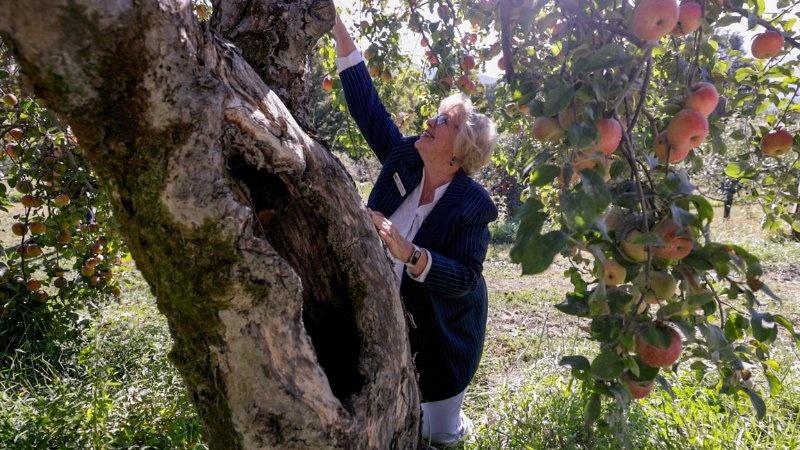
These trees are older than the ones in most commercial apple orchards, where trees are often replaced every 25–30 years. The Orchard at Altapass, however, is a nonprofit preservation orchard with trees that date back to the early 1900s, when the orchard was initially planted by the Holston Land Company and the Clinchfield Railroad. The orchard and over 3,000 acres of land surrounding it are all under a conservation easement that protects them from development.
This protected land is also helping to mitigate the impacts of climate change in the region.
A unit of the National Park Service (NPS), the Blue Ridge Parkway is a 469-mile motorway that has drawn 13–16 million visitors per year since 2014 according to NPS statistics. And while spectacular views are part of what draws visitors each year, they are not guaranteed because a lot of the land along the parkway is privately owned.
Mary Alice Holley, associate director of the Conservation Trust for North Carolina (CTNC), reminds us that the parkway is “over 400 miles north-south, but it’s a motor road that’s two lanes.”
“There are lots of places along the parkway that are not under conservation, permanent protection,” she explains.
Which means that land could be developed into anything, including houses, hotels, theme parks or factories. But private landowners can choose to work with a land trust like the CTNC to put a protective easement on all or part of their property that would keep it from being developed.

According to Mary Alice, the Blue Ridge Parkway is a unique unit of the National Park system since federal government action is not needed to expand its boundary. “All it takes is a cooperative partnership between the Park Service and a land trust like CTNC,” she explains. “So what we’ve been doing for over 20 years now is working with private landowners to acquire land. Then we hold and steward it until the Park Service is ready to take it on and add it to the park.”
The Historic Orchard at Altapass was originally planted in the early 1900s by the Holston Land Company on either side of the Clinchfield Railroad. The orchard, initially called the Holston Land Orchard, provided jobs and a revenue stream through tourism and apples that could be loaded onto passing trains. If you were eating Gerber baby food at this time, you may have had some of the apples from this orchard.
The Blue Ridge Parkway cut the orchard in half when it was built, which stunted the orchard’s economic growth according to the Altapass Orchard site. Combined with the impact of the Great Depression, the orchard didn’t remain the thriving enterprise it once was.
In 1995, Kit Carson-Trubey was visiting her brother Bill Carson and his wife Judy in Little Switzerland, North Carolina, and saw an ad in the local paper for “277 acres of unrestricted land.”
Bill Carson smiles as he recalls his sister, whom he fondly refers to as Sis, getting bored of watching him weave fabric on his loom and started digging through the local paper.
“There were four earlier calls of people wanting to buy the orchard, but Sis talked to him [the landowner], and they agreed on a price, and she hung up owning the orchard. And that was really an amazing thing,” he recounts.
One of the earlier calls was a developer, who, according to Bill, later called Kit after she’d bought the land to offer her double what she had paid. But Kit was determined to keep the orchard the way it was.
“I asked her what she was going to do with it, and she said ‘nothing,’” he recalls. “I’m going to make sure this beautiful place is not ruined by a lot of construction and houses and things like that.”
Bill and wife Judy joined Kit in reopening the orchard and managing it as a u-pick and cultural heritage center. The orchard is now managed by the nonprofit Altapass Foundation, Inc., with a mission (per its website) “to preserve the history, heritage and culture of the Blue Ridge Mountains” and “protect the underlying orchard land.”
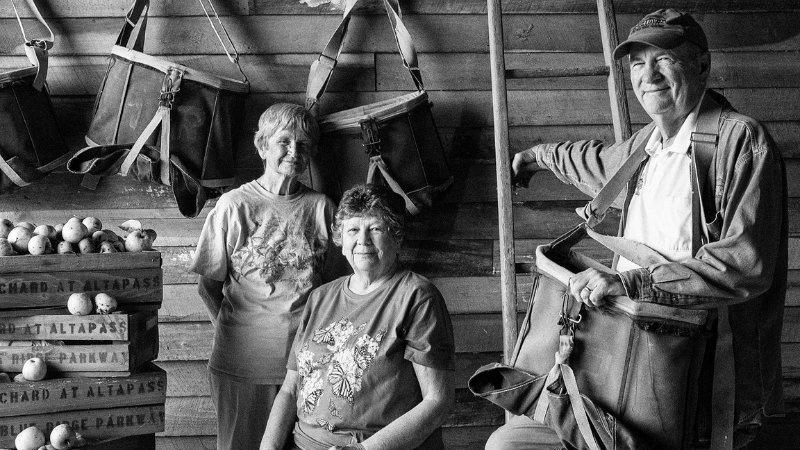
“You have to have private landowners who really care about investing in conservation that are willing to work with a land trust, to put a conservation easement on their property or to donate or sell their property into conservation, because otherwise we’re not going to have places like this,” Mary Alice shares.
The legacy they started in the ’90s lives on, in part because the land the orchard is on and the surrounding acres are all protected by conservation easements.
The orchard is a bustling destination on the parkway, especially on weekends. Visitors can pick their own apples or buy some pre-bagged, purchase treats and merchandise at a gift shop, enjoy live music and dancing on the weekends and stroll through the orchard on its many trails.
If you visit around lunchtime or when there’s live music, you’ll likely find Bill Carson telling stories to interested visitors or asking people to dance. And if you’re lucky and visit at the right time of year, you’re likely to see a monarch butterfly fluttering between the apple trees and landing on milkweed plants on its pilgrimage south.
The next generation of community leaders at the orchard, like Mission and Sustainability Coordinator Sam McKinney, is ready to carry the torch forward. But Sam isn’t new to the area; he grew up on one of the mountains you can see from the orchard’s back porch and spent his youth visiting the orchard to pick apples and play music. His family history runs deep in the area, which makes him extra grateful that the orchard and all its history have been conserved.
“This orchard is my life,” he emphasizes. “It’s my passion to see that it’s saved forever.”
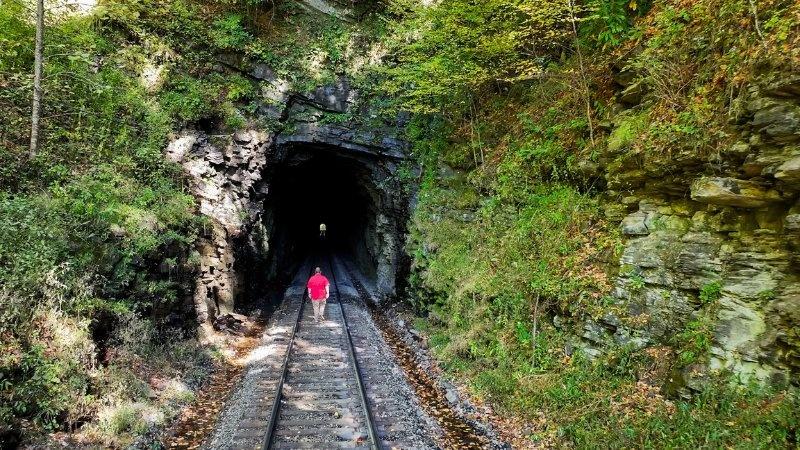
Conserving land along the Blue Ridge Parkway isn’t just important for protecting views for visitors. Undeveloped land could also play a key role in building resiliency to climate change in surrounding communities.
“North Carolina needs a lot of resilience building. Our climate is changing. We are dealing with the effects of that. We’re seeing increases in rainfall and precipitation. We’re seeing flooding. We’re seeing increases in heat,” Mary Alice shares.
She says that conserved land can help address a lot of those issues.
“Our view is that land conservation provides some really effective tools to build that resilience for the communities that need it,” she explains. “We can store water; we can slow water down. We can start using trees to absorb carbon out of the air. To start slowing that increase in temperature.”
And conserved land also allows for plants and animals to have somewhere to go, to migrate and adapt to changes in climate. Contiguous plots of protected land, like the land protected along the Blue Ridge Parkway, allow for this movement and give organisms the time to adapt as our climate shifts.
According to the 2020 North Carolina Climate Science Report, North Carolina is predicted to experience “disruptive sea level rise, increasingly hot nights, and more days with dangerous heat and extreme rainfall” over the next 80 years “unless the global increase in heat-trapping gases is stopped.”
The Conservation Trust for North Carolina has been focusing its efforts on climate change resiliency in the area around the Blue Ridge Parkway.
“What we’ve learned from looking at the data about this space is it’s twofold. It has high climate resiliency scores because so much of the land around here is forested, and we’re at a good elevation for plants and wildlife to thrive. Additionally, there are risks that have been identified because of our changing climate,” says Mary Alice.
Sam McKinney has lived in the vicinity of the orchard all his life and shares what he’s observed regarding changing weather patterns in the area.
“I can tell you that winters are not anywhere near as severe as even when I was growing up 20 years ago,” he relates, mentioning that heavy snows were not uncommon in the winter and are rare now.
More concerning than a lack of snow in the winter are the changes to spring weather patterns that Sam has observed. He says they’ve seen warm springs prompt the apple trees to bloom earlier than usual, but frosts can happen as late as May in the mountains.
“Those blossoms come out, and a week later it gets down to 25, 27 degrees one night, and it sends apple orchardists into panic because that can kill your apple crop,” he shares. “A couple of weeks early with things blooming out can make a big difference.”
Sam has witnessed this at the orchard but explains it’s protected by its location on the edge of the Eastern Continental Divide. According to Sam, the orchard’s position in a bowl-like geography, surrounded by mountains on all sides, helps it weather these climate extremes.
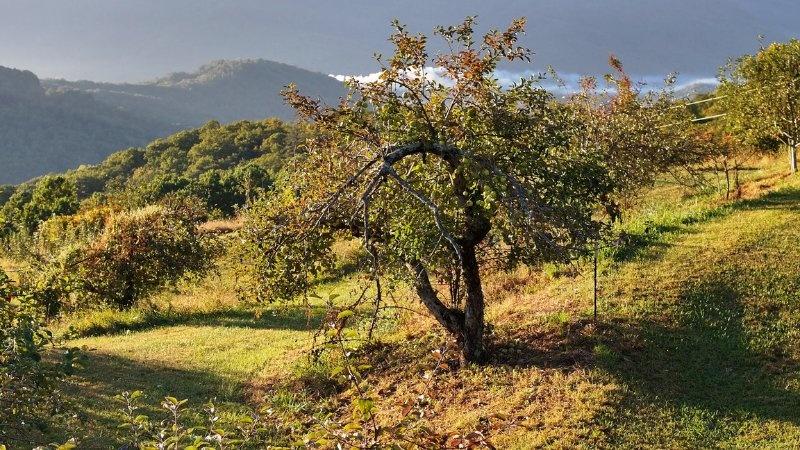
“Because of where we are in this pocket in the mountains, we have warm air that comes up from the valley below us and rises up over the apple trees,” he says. “Nine times out of ten, this bowl here in the mountains and the movement of warm air saves our apple crop from frost and freeze damage.”
Sam mentions that sometimes when nearby orchard crops are hit hard by a freeze, the majority of the Altapass Orchard trees’ blooms are protected.
Something Mary Alice highlights when she talks about the land conservation work that CTNC does is that conserving land doesn’t mean it can’t be used.
“Conserved land does not have to be locked up and put away,” she emphasizes.
She points out that the orchard is an agricultural production space. “Conserved land can be done with farmers. It can be done with parks and public land and trails. But it can look different for everybody,” she shares.
At the orchard, land, views and cultural history are being conserved in a way that locals and visitors can enjoy and appreciate.
Sam shared that he has a family reunion every summer, and family members who grew up in the area and return are shocked to see how many structures have been built in the region over the years. “While that’s just part of life, development, at the same time we need places where we save history, and the land and the trees,” he affirms.
As we look out over the views of densely forested mountains from the heart of the orchard, Beth reminds us that the motto of the Historic Orchard at Altapass is “Saving the Good Stuff.”
“The good stuff is just what we’re looking at,” she says. “The views and the trees and the heritage apples, the rich history that exists here. That is what we are trying to protect here.”
The Blue Ridge Parkway is known for its views, but the surrounding land is privately owned, meaning it could be developed. Learn how Conservation Trust for NC works with property owners to protect the land, conserving views and habitat for wildlife impacted by climate change. Plus, pay a visit to the Historic Orchard at Altapass to see how land conservation doesn’t mean land untouched by humans.
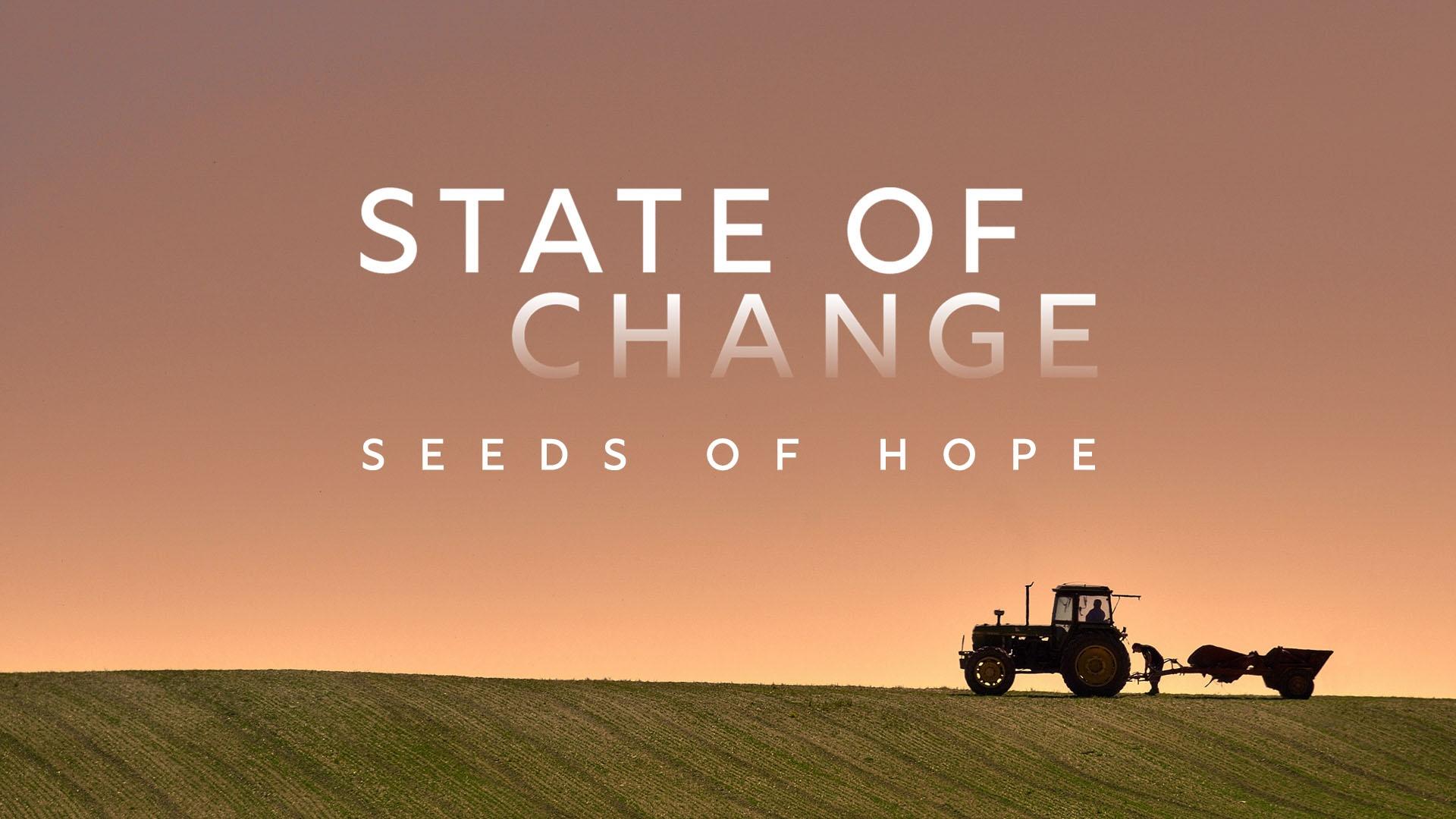
Meet the North Carolinians who are adapting to our changing climate in new and inspiring ways. From conserving land and growing food that’s tolerant of extreme conditions to using farmland to produce both crops and solar energy, these innovators are facing the challenges of climate change with perseverance and ingenuity.
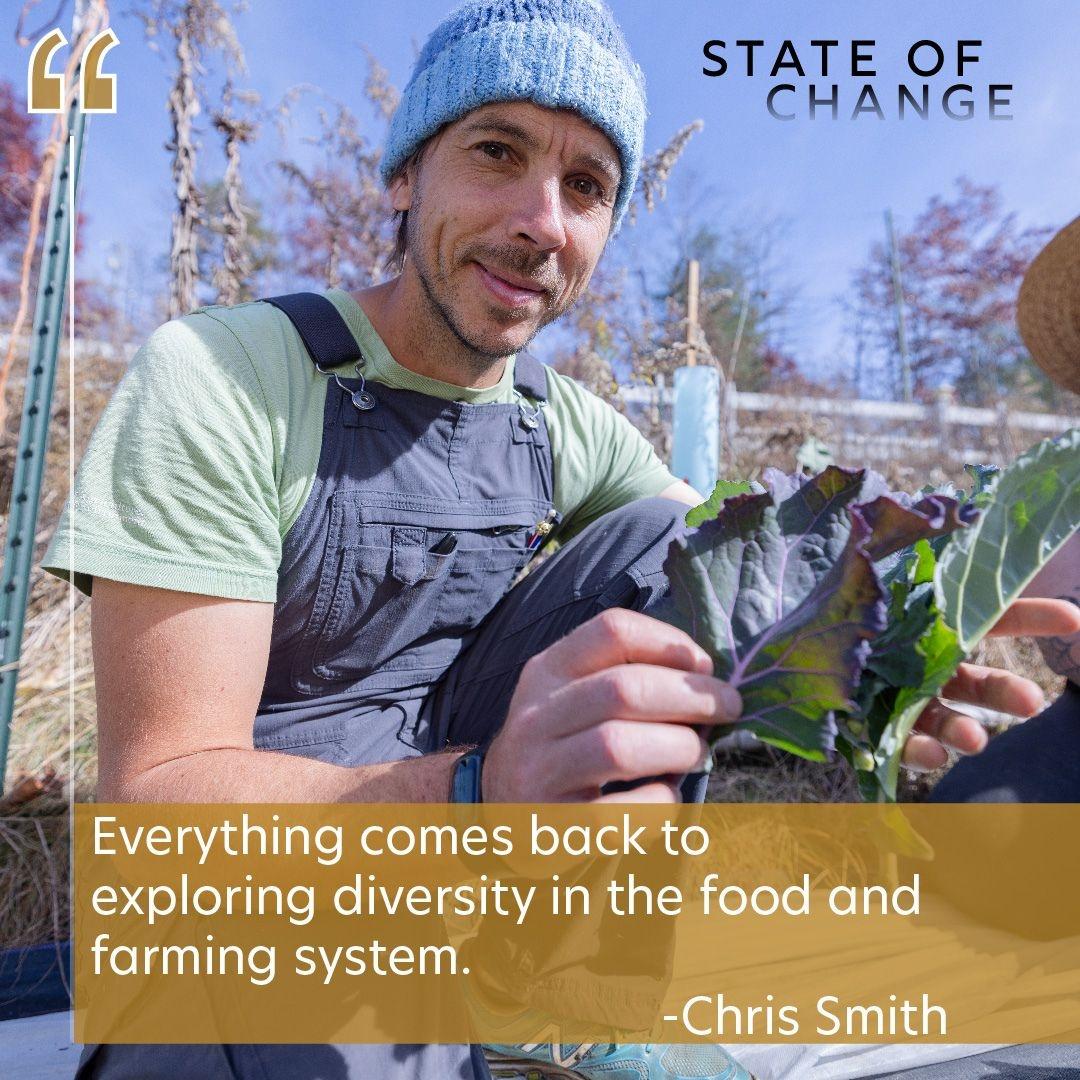
The Utopian Seed Project in western NC is developing regionally adapted varieties of crops and introducing tropical staples to increase resiliency..
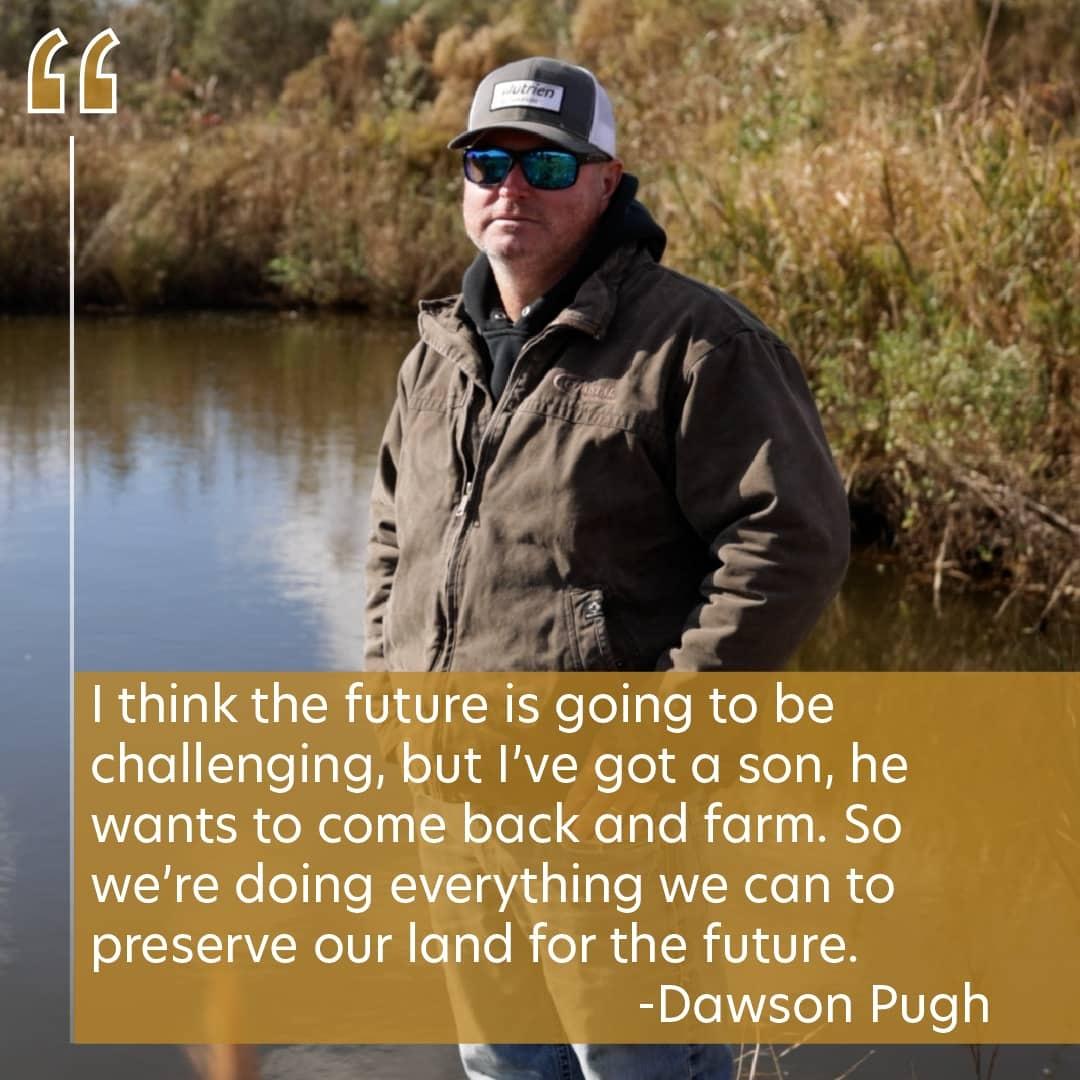
Coastal farmers in Hyde County work to keep their land productive in the face of saltwater intrusion.
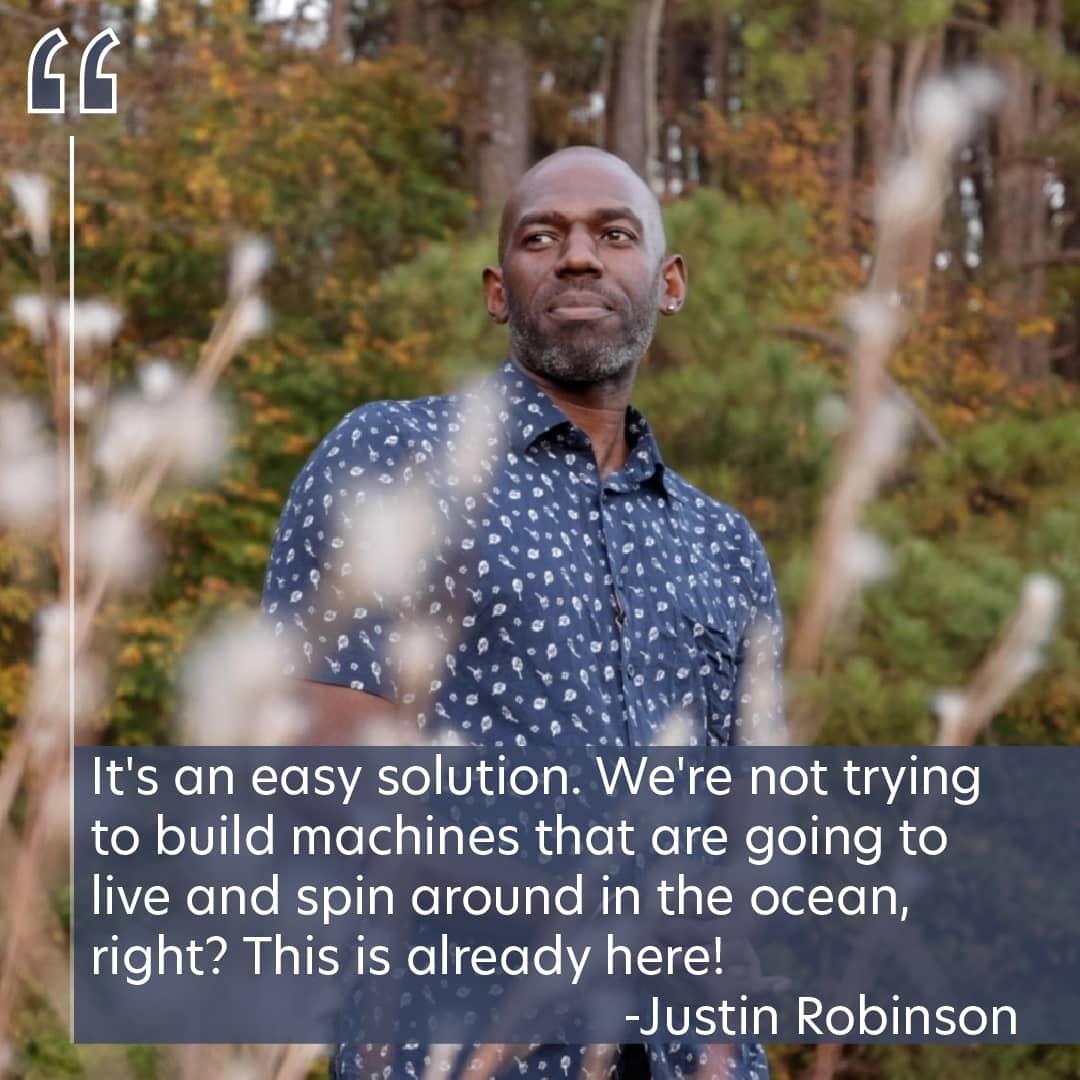
The low-maintenance plants of the Piedmont Prairie have a superpower: they store carbon deep underground.
